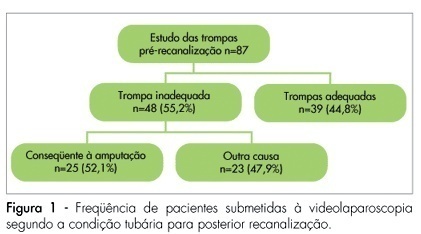Revista Brasileira de Ginecologia e Obstetrícia. 2007;29(6):297-302

PURPOSE: to identify the main characteristics of the diagnostic and surgical gynecological laparoscopies carried out in patients with reproductive difficulties at a teaching hospital in Recife, from 2000 and 2004. METHODS: a hospital based descriptive case-series study was carried out with 295 patients who had undergone gynecological laparoscopy for either infertility or tube recanalization in the Mother and Child Health Professor Fernando Figueira Institute. Information was obtained from the surgical records of the laparoscopies carried out from January 2000 to December 2004. The inclusion criteria was infertility or pre-recanalization study as a surgical indication. The information was typed twice into a data bank. Tables with central measurements and dispersion tendency were created for the quantitative variables and frequency distribution for the categorical variables. The statistical program, Epi Info 3.3.2., was used to analyze the data. RESULTS: along the study, 462 gynecological laparoscopies were analyzed, 295 (63.8%) of them having as an indication either infertility (41.1%) or the study of possible tube recanalization (18.8%). The patients’ average age in both groups was from 30 to 34 years old. Among the 87 patients with desire of tube recanalization, 55.2% had one or both tubes inadequate for the procedure, and from those, 52.1% was diagnosed with tube amputation (fimbrectomy). In the infertility cases, the most observed findings were adherences (60.6%), tube obstruction (40.9%) and endometriosis (36.1%). Among the procedures carried out, lysis of adherences (34.2%) and biopsies (21%) were the most frequent, followed by endometriosis treatment (10.8%) and salpingostomy (10.8%). CONCLUSION: videolaparoscopy is an important tool in the study and treatment of patients with infertility and before tube recanalization, especially in those hospitals where advanced reproductive techniques are not available.
Search
Search in:


Comments